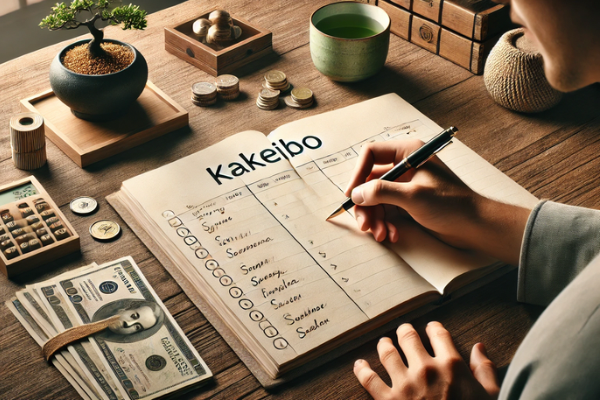In a time when managing money often involves apps, spreadsheets, and automation, the Kakeibo method offers a refreshing return to simplicity. Rooted in mindfulness and self-awareness, this Japanese budgeting technique encourages individuals to slow down, reflect, and make more intentional financial decisions. More than just tracking expenses, Kakeibo is a lifestyle approach to budgeting that helps people develop healthier relationships with money.
In this article, you’ll learn how the Kakeibo method works, why it’s effective, and how to apply it to your personal finances to save more, spend less, and achieve your financial goals.
What Is the Kakeibo Method?
Kakeibo (pronounced “kah-keh-boh”) is a Japanese word that means “household financial ledger.” The method was popularized in 1904 by Hani Motoko, Japan’s first female journalist, who created it to help housewives manage household finances more effectively. Despite being over a century old, the method remains relevant today due to its emphasis on intentional living and mindful spending.
At its core, Kakeibo is a simple pen-and-paper method that helps you become more aware of your income, expenses, and financial habits. Unlike modern budgeting tools that do the work for you, Kakeibo requires active engagement, which strengthens your understanding and accountability.
The Four Pillars of Kakeibo
The Kakeibo method organizes your expenses into four main categories:
- Needs: Essentials like rent, groceries, utilities, transportation, and insurance.
- Wants: Non-essentials such as dining out, entertainment, or shopping.
- Cultural: Expenses related to self-development or experiences, like books, museum visits, or hobbies.
- Unexpected: Emergency expenses, repairs, or unplanned purchases.
By grouping your spending this way, Kakeibo helps you clearly see where your money is going and which areas you can control or reduce.
Step 1: Set Up Your Kakeibo Notebook
Start by setting up a notebook or journal to serve as your Kakeibo ledger. You can divide it by weeks or months, depending on how frequently you want to track. At the beginning of each period, answer the following four foundational questions:
- How much money do I have available?
- How much do I want to save?
- How much am I spending?
- How can I improve next time?
These questions are designed to promote reflection and encourage you to think before spending, not just after.
Step 2: Record Your Income and Fixed Expenses
At the start of the month, write down all sources of income you expect to receive. This could include salary, freelance work, or passive income. Then subtract your fixed expenses — items like rent, insurance, subscriptions, and loan payments. The amount left is what you’ll use for variable expenses and savings.
Example:
- Total Income: $3,000
- Fixed Expenses: $1,500
- Available Balance: $1,500
From this remaining amount, decide how much you want to save and how much you’ll allow yourself to spend across the four Kakeibo categories.
Step 3: Track Your Daily Spending by Category
Throughout the month, write down every expense and assign it to one of the four categories: Needs, Wants, Cultural, or Unexpected. Be as specific as possible. Instead of just writing “groceries,” note what you bought and how much it cost. This builds awareness and gives you a deeper understanding of your habits.
You can set aside a few minutes each day or once a week to update your notebook. The physical act of writing makes each expense feel more real and memorable, which helps you become more mindful about future purchases.
Step 4: Reflect Weekly and Monthly
At the end of each week, take time to reflect on your spending. Ask yourself:
- Which category did I spend the most in?
- Did I stick to my goals?
- Were there purchases I regret?
- What can I change or improve next week?
At the end of the month, summarize your total spending per category, calculate your total savings, and review your answers to the four core questions. This closing reflection helps reinforce good habits and gives you a clear sense of progress.
Benefits of the Kakeibo Method
Kakeibo offers several benefits beyond simple budgeting:
- Increased mindfulness: You think carefully before spending and understand the emotional drivers behind your purchases.
- Improved savings: By setting clear savings goals at the start of each month, you make saving a priority rather than an afterthought.
- Less stress: A deeper awareness of your finances can reduce anxiety and help you feel more in control.
- No tech required: All you need is a notebook and a pen, making it accessible to anyone.
Tips for Success with Kakeibo
- Be consistent: Set aside a specific time each day or week to update your notebook.
- Be honest: Don’t skip over small purchases — they add up quickly.
- Be reflective: The real power of Kakeibo lies in the regular review and reflection process.
- Customize as needed: While the four categories are helpful, feel free to adapt them to suit your lifestyle or goals.
Final Thoughts: Mindful Money Management
The Kakeibo method proves that sometimes the simplest tools are the most effective. By encouraging you to think, write, reflect, and act with intention, Kakeibo helps you move beyond reactive budgeting and toward a more mindful, purposeful relationship with money.
If you’re looking for a budgeting method that combines practicality with personal growth, Kakeibo offers a meaningful and low-tech path to better spending habits and financial freedom.
